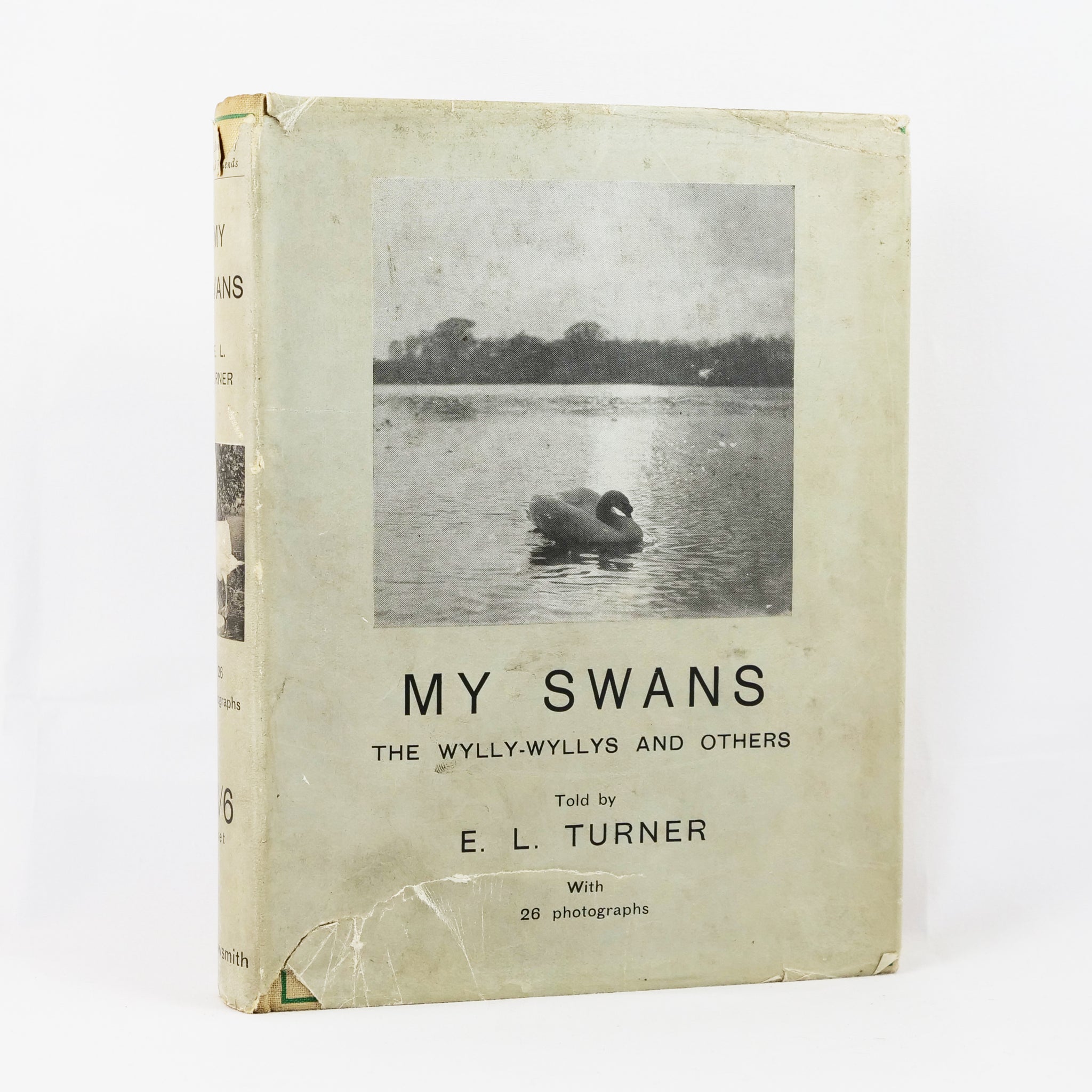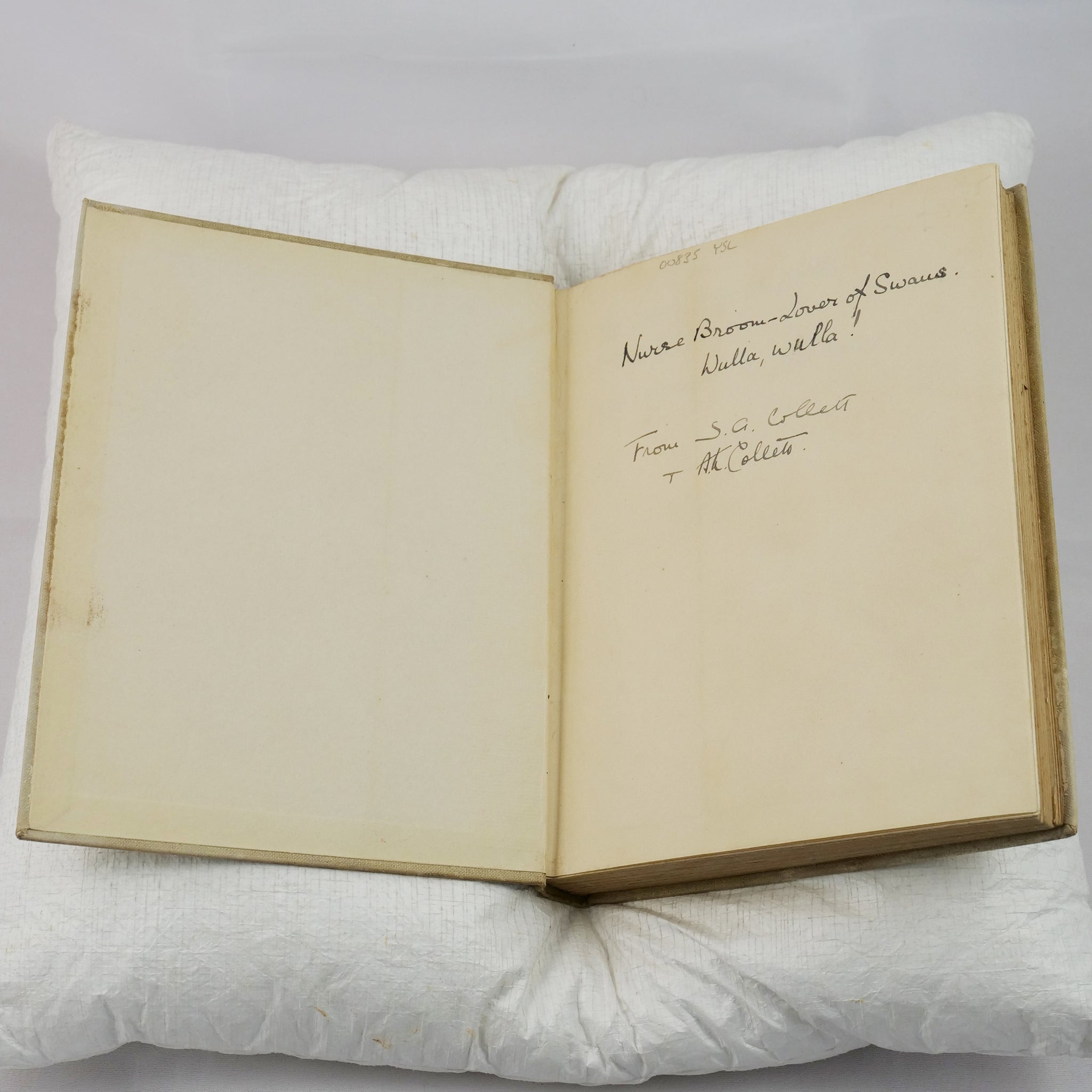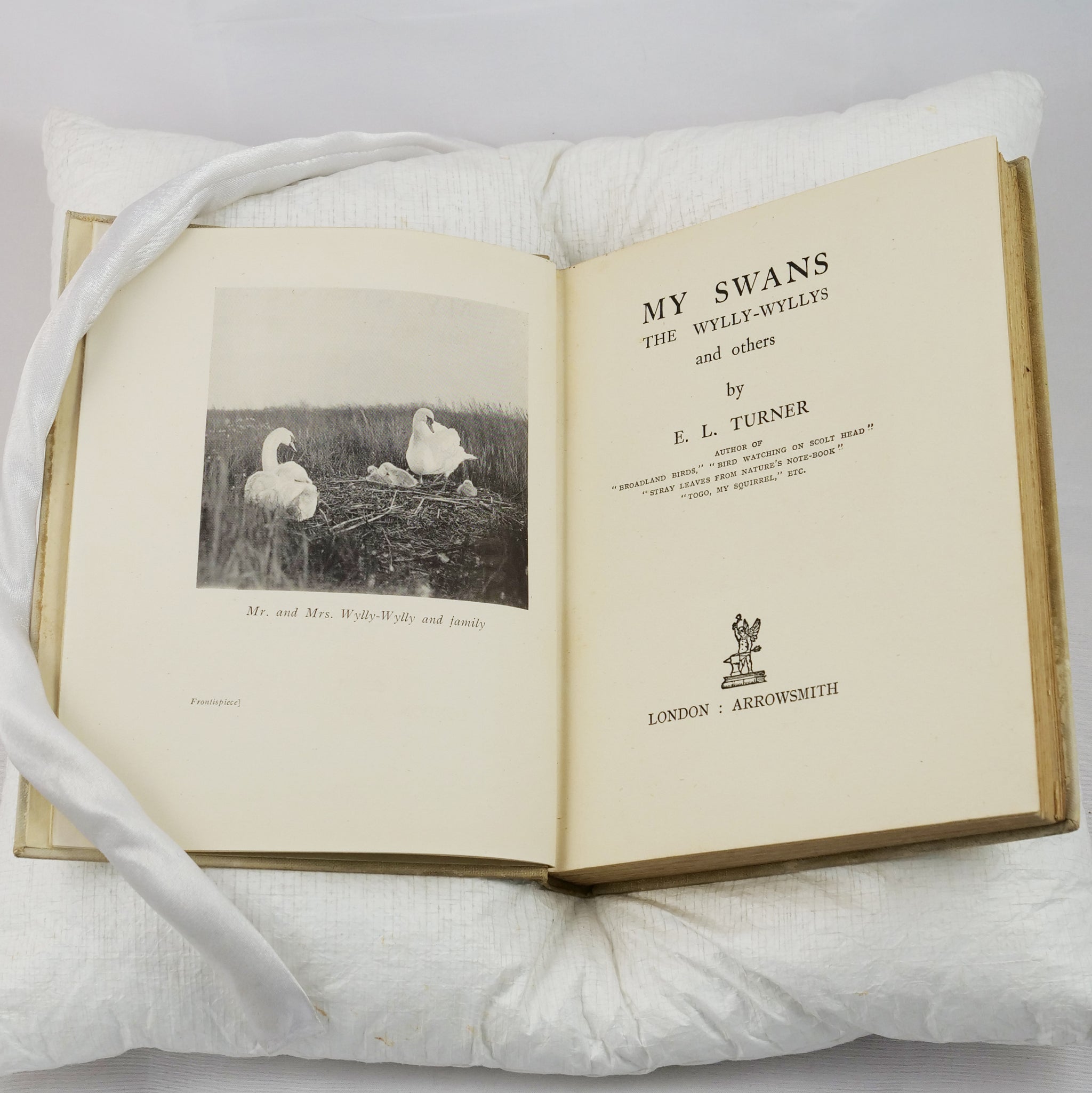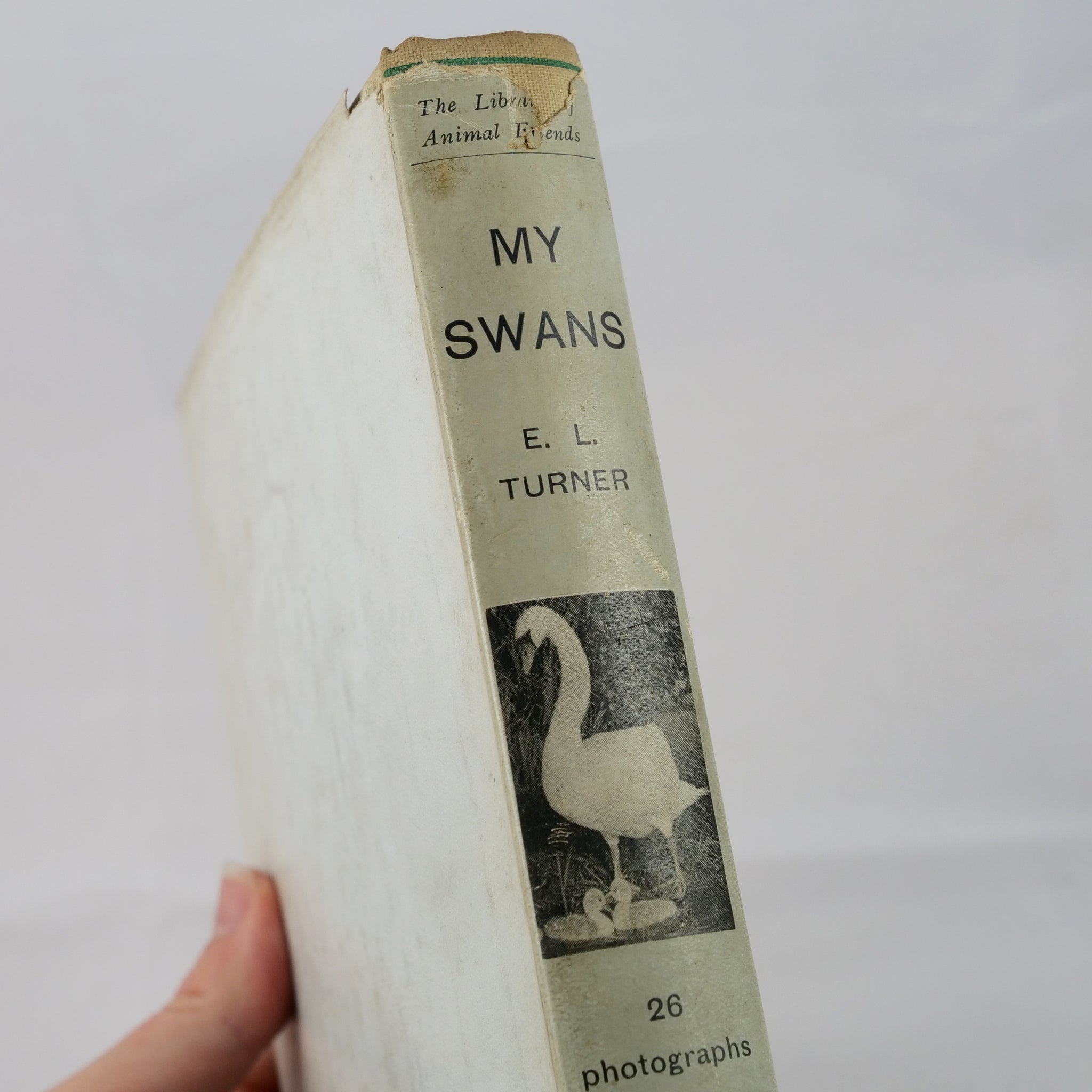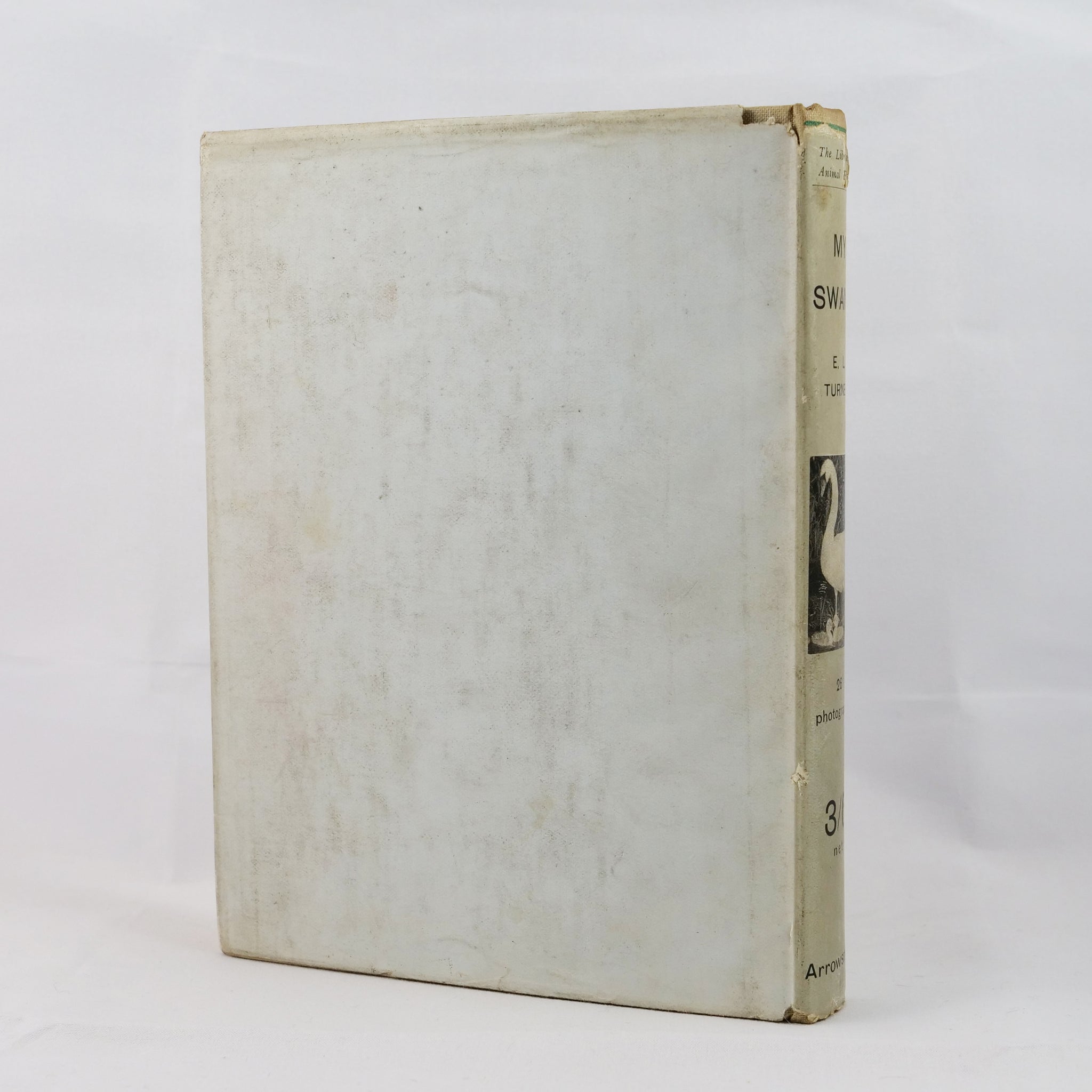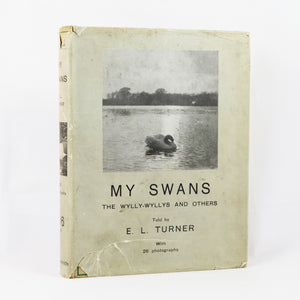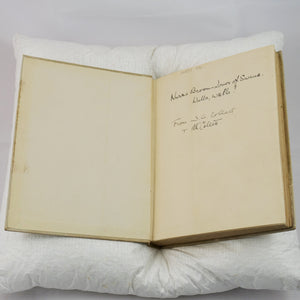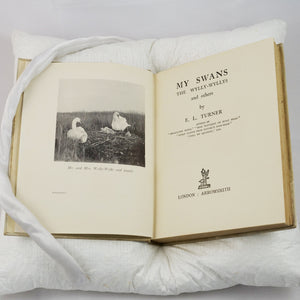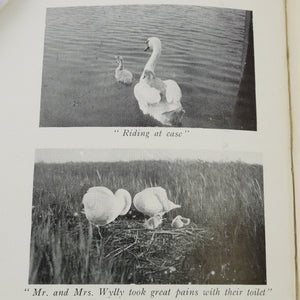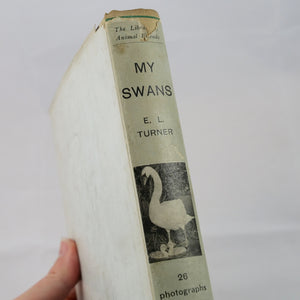Turner, E. L. | My Swans the Wylly-Wyllys and Others
£100.00
-
First edition, first impression of this charming memoir of a family of mute swans by the bird photographer and conservationist Emma Louise Turner (1867-1940). As Turner explains in the introduction, the swans lived near her houseboat at Hickling Broad and the name she gave them, the “Wylly-Wyllys”, “arose out of the swan cry, ‘Wulla, wulla, wulla,’ repeated very quickly by the fen men when calling the swans”. The text follows the birds through their breeding season and also discusses some of the other species of wild swans in the area, and it is illustrated with 26 of Turner’s own photographs. Copies with the dust jacket are particularly uncommon.
Turner became interested in photography after meeting wildlife photographer Richard Kearton in 1900. She joined the Royal Photographic Society the following year, and by 1904 was giving talks illustrated with her own slides. Turner was particularly interested in birds and travelled throughout the UK and in Europe to photograph them, but her main base of operations was in the Norfolk Broads, where she lived for part of each year beginning as early as 1901. This was where, in 1911, she photographed a nestling bittern, proving that the species was breeding in Britain for the first time since 1886. Another highlight of her career was the award of the Royal Photographic Society’s Gold Medal for a photograph of a great crested grebe on its nest, published in her book Broadland Birds in 1924. In 1904 Turner was elected one of the first fifteen female members of the Linnean Society, in 1909 she became one of the first four honorary female members of the British Ornithologist’s Union, and she was the only woman involved in the 1933 appeal that led to the creation of the British Trust for Ornithology.
-
London: Arrowsmith, 1932.
Octavo. Original grey cloth, titles to spine and upper board blocked in green. With the dust jacket. Frontispiece and 15 plates from photographs by the author. Contemporary gift inscriptions to the front free endpaper. Dampstain and loss of size affecting the boards but not the contents, what may be a little light brown mildew on the lower board and corresponding area of the jacket verso. A good copy in the rubbed, spotted, and dulled jacket with a chip and closed tear to the upper panel, a small chip at the head of the spine panel affecting the name of the series but not the title, and some smaller nicks and creases.

